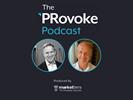Aarti Shah 21 Mar 2013 // 12:00AM GMT
Since joining Trulia in 2008, Ken Shuman completely restructured the real-estate company’s comms and built a formidable breaking news organization, amplified by data-driven storytelling. All this while pulling the bulk of PR in-house and working with CEO Pete Flint on comms around the company’s IPO last year.
Newly-promoted to VP of comms, reporting directly to the CEO, Shuman delves into what’s driving his department’s unique positioning as both a traditional PR arm and storytelling generator.
One of the early moves you made was making sure Trulia was seen as truly a consumer company -- and not just an online site. Is that difficult to do being based in San Francisco?
First, we realized that we wanted to be on the morning shows -- The View, the Today Show -- and that is very hard to do if you have a technology spokesperson who hasn’t been on-screen before. So, we did a deep dive into who we could work with and ended up forming a partnership with Michael Corbett because he knew our audiene and space. He now works with us on the TV segments and events. Plus, he already had great content, like a blog, that offered tremendous exposure for us.
Trulia’s own blog often breaks news and is cited by the likes of US Magazine for scoops on celebrity real-estate. Of course there’s getting mentioned in media that pick up the news, but how else does this fit into your comms strategy?
Here’s an example. Kanye West’s home recently hit the market and most media outlets reported that it was sold in three days. Well, it really only went into escrow and we got word that it fell out of escrow and went back on the market. We didn’t post this on our blog, and instead, offered it to E! News as an exclusive - in exchange for having Josh Altman (the host of Bravo's Million Dollar Listing LA) come on the program and talk about an upcoming campaign we’re doing with him to select an intern.
As an organization, you are sitting on a tremendous amount of data that can fuel stories. How do you turn statistics into compelling narratives?
We just released our quarterly rent versus buy index where we produce a report and interactive visualizations on whether it's better to buy or rent in various markets and what would happen if things, like mortgage rates, go up. But we don’t just draft a release and pitch it out. We actually publish the reports and visualizations ourselves first, and then our chief economist makes the media rounds to talk about this. We are the newsroom - we get the blogs, reports and visualizations out there.
And sometimes this is mashed up with other data or pop culture?
We call these ‘data sprints’ because the world of real-estate data can be cut-and-dry, so we bring in pop culture. For Valentine’s Day, we did a mash-up of data from the Census Bureau, combined with our housing information, to identify the neighborhoods where the most single men and women lived within a metro. We did a gayborhood piece on Gay Pride weekend analyzing real-estate trends in areas with a high number of gay men and women -- and more affordable alternatives to, for example, the Castro district in San Francisco.
So, you’re doing all of this without an agency partner?
I was an agency guy for 13 years and fully believe in the value they offer. But on client side, you have to ask - what do I need the most help with? And should I build or outsource this? When I joined, we worked with Sutherland Gold and it was amazing. We were an unknown player and I was a one-man PR team, so I needed an external team.
But as we started to mature, I knew that data was going to play a much larger role in what we’re doing and we needed to build a program around this. I also wanted to expand into consumer media and glossies, essentially getting out of the Silicon Valley bubble. At the time, I made an agency selection that didn’t go smoothly, but that’s because we were a mid-sized company by then. When you’re small, you need the arms and legs and if you’re HP or IBM, you need the support because there’s so much work.
But for me and my budget at the time - which was $20k to $25k per month - I could make three internal hires with very specific backgrounds, getting 160 hours out each person each month. And they’d be fully invested in the company. It was a no-brainer.
We do still work with Abernathy MacGregor and they have been a fantastic resource.


































.jpg)































